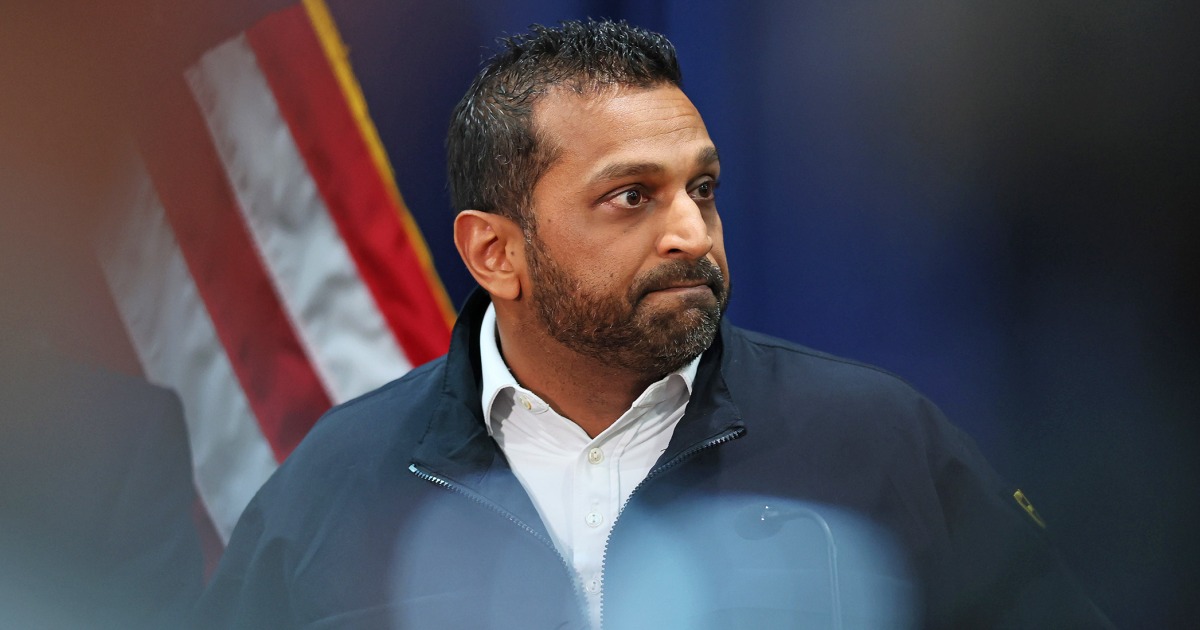NBA gambling scandal shows that La Cosa Nostra is still alive and well – NBC News

Analysis of Organized Crime Activities in Relation to Sustainable Development Goals
Executive Summary
A recent federal indictment has exposed a multimillion-dollar illegal gambling operation, highlighting the persistent threat organized crime poses to the achievement of the Sustainable Development Goals (SDGs). Associates from four major crime families—the Bonanno, Gambino, Genovese, and Lucchese—were implicated in a technologically advanced poker scheme. This report analyzes the operation’s direct and indirect impacts on key SDGs, particularly SDG 16 (Peace, Justice and Strong Institutions), SDG 8 (Decent Work and Economic Growth), and SDG 11 (Sustainable Cities and Communities).
Impact on SDG 16: Peace, Justice and Strong Institutions
The activities of La Cosa Nostra directly undermine the core principles of SDG 16 by weakening the rule of law, promoting corruption, and eroding public trust in institutions. The indictment reveals a sophisticated criminal network operating outside legal and regulatory frameworks, challenging the state’s monopoly on justice and economic regulation.
- Undermining Rule of Law: The operation involved illegal gambling, loan sharking, and the use of threats and intimidation to enforce debt payments, representing a parallel, illicit system of governance.
- Corruption of Justice: By creating and sustaining a shadow economy, these criminal enterprises foster an environment where corruption can thrive, weakening the effectiveness and accountability of public institutions.
- Strengthening Institutions through Enforcement: The federal indictment, which names twelve associates across multiple crime families, represents a crucial action by law enforcement to uphold the rule of law and dismantle criminal networks, thereby contributing to the strengthening of just and effective institutions. The individuals and their affiliations are as follows:
- Bonanno Family: Ernest Aiello, Julius “Jay” Ziliani, Thomas “Juice” Gelardo (also linked to Genovese)
- Gambino Family: Louis “Lou Ap” Apicella, Ammar “Flapper Poker” Awawdeh, John Gallo, Joseph Lanni, Nicholas Minucci, Angelo Ruggiero Jr.
- Genovese Family: Matthew “The Wrestler” Daddino, Lee Fama
- Lucchese Family: Seth Trustman
Economic Implications and SDG 8: Decent Work and Economic Growth
Organized crime’s involvement in illegal gambling diverts significant financial resources from the legitimate economy, hindering progress towards SDG 8. These illicit activities do not contribute to productive employment, tax revenues, or sustainable economic growth.
- Creation of a Shadow Economy: The operation facilitated betting on credit, a practice prohibited in legal gambling sectors. This creates an unregulated market that undermines legitimate businesses and deprives the state of tax revenue essential for public services.
- Illicit Financial Flows: Proceeds from the scheme were distributed among the crime families, contributing to illicit financial flows that can be used to fund further criminal activities, rather than being invested in sustainable development.
- Technological Misuse: The use of advanced technology, including hidden cameras and X-rays, to cheat players demonstrates the co-opting of innovation for illicit gain, contrasting with the goal of promoting technology for sustainable economic progress.
Threats to SDG 11: Sustainable Cities and Communities
The methods employed by these criminal organizations create an environment of fear and insecurity, directly opposing the objective of SDG 11 to make communities safe, inclusive, and resilient.
- Violence and Intimidation: The indictment details how members of the Bonanno, Gambino, and Genovese families used “threats and intimidation to assure payments of debts.” Such actions erode community safety and social cohesion.
- Erosion of Social Capital: The presence of organized crime in communities can lead to a breakdown of trust among residents and in public institutions, making it more difficult to build the partnerships necessary for sustainable community development.
Historical Context and Persistent Challenges
The continued involvement of organized crime in gambling and sports betting highlights a persistent challenge to institutional integrity. This is not an isolated incident but part of a historical pattern of criminal exploitation that adapts to new technologies and markets.
- The 1919 “Black Sox” scandal, allegedly engineered by a mentor to a Genovese boss, shows a long history of organized crime corrupting professional sports.
- Alleged connections between the Colombo family and NBA officials in the 1990s and 2000s demonstrate ongoing efforts to infiltrate regulated sectors.
- Recent indictments against Gambino and Lucchese family members for illegal betting and racketeering confirm that these criminal enterprises remain active and adaptable.
Conclusion
The indictment against associates of New York’s crime families serves as a stark reminder that organized crime is a significant barrier to sustainable development. These illicit activities directly contravene the goals of promoting peace and justice (SDG 16), fostering inclusive economic growth (SDG 8), and building safe communities (SDG 11). Sustained and robust law enforcement actions are essential not only for public safety but also for creating the stable, just, and transparent institutional environment required to achieve the 2030 Agenda for Sustainable Development.
Analysis of Sustainable Development Goals in the Article
-
Which SDGs are addressed or connected to the issues highlighted in the article?
The primary Sustainable Development Goal (SDG) connected to the issues in the article is:
- SDG 16: Peace, Justice and Strong Institutions: This goal is central to the article’s theme, which revolves around organized crime, illegal activities, and the response of law enforcement and the justice system. The article details the operations of crime syndicates (“five families”), their illicit schemes like gambling and loan sharking, and the efforts by federal authorities to dismantle these operations through indictments and prosecutions. This directly relates to promoting peaceful and inclusive societies, providing access to justice, and building effective, accountable institutions.
-
What specific targets under those SDGs can be identified based on the article’s content?
Based on the article’s focus on organized crime and the justice system’s response, the following specific targets under SDG 16 can be identified:
- Target 16.1: Significantly reduce all forms of violence and related death rates everywhere. The article explicitly mentions that mob members “used threats and intimidation to assure payments of debts.” This use of coercion and psychological violence to enforce the rules of their illegal operations is a direct contradiction to this target.
- Target 16.3: Promote the rule of law at the national and international levels and ensure equal access to justice for all. The entire article is a case study of the struggle to uphold the rule of law against organized crime. The “sweeping indictment” by prosecutors from the Eastern District of New York and the statement by FBI Director Kash Patel about executing “a system of justice against La Cosa Nostra” are direct actions to promote the rule of law. The mob’s operations, which exist outside legal frameworks and use intimidation instead of legal recourse, undermine this target.
- Target 16.4: By 2030, significantly reduce illicit financial and arms flows, strengthen the recovery and return of stolen assets and combat all forms of organized crime. This target is directly addressed. The article describes a “multimillion-dollar poker con” and notes that gambling is a “bread-and-butter income source for the mob.” It states that “all crime families involved ‘received proceeds’ from the crooked games.” These are clear examples of illicit financial flows generated by organized crime, which this target aims to reduce. The federal indictments are a direct measure to “combat all forms of organized crime.”
-
Are there any indicators mentioned or implied in the article that can be used to measure progress towards the identified targets?
Yes, the article mentions or implies several indicators that can be used to measure progress:
- For Target 16.1, an implied indicator related to Indicator 16.1.3 (Proportion of population subjected to physical, psychological or sexual violence) is the number of victims who were subjected to the mob’s “threats and intimidation” to pay their debts. While not quantified, the indictment’s reference to this practice suggests it is a measurable aspect of the crime.
- For Target 16.3, an indicator related to Indicator 16.3.2 (Unsentenced detainees as a proportion of overall prison population) is the number of individuals indicted and prosecuted for organized crime activities. The article mentions “a dozen mafia associates” in one indictment and a separate “17-person indictment” from the previous year. Tracking the number of indictments and successful prosecutions against organized crime serves as a measure of the justice system’s effectiveness.
- For Target 16.4, an indicator related to Indicator 16.4.1 (Total value of inward and outward illicit financial flows) is the monetary value of the criminal operations. The article describes the poker scam as a “multimillion-dollar” operation and notes that when multiple families are involved, it signifies a “huge racket” with “multimillions of dollars” in play. Quantifying the value of seized assets and disrupted financial schemes would be a direct measure of progress.
-
Create a table with three columns titled ‘SDGs, Targets and Indicators” to present the findings from analyzing the article.
SDGs Targets Indicators Identified in the Article SDG 16: Peace, Justice and Strong Institutions 16.1: Significantly reduce all forms of violence and related death rates everywhere. The prevalence of “threats and intimidation” used by crime families to collect debts, which relates to psychological violence against victims. SDG 16: Peace, Justice and Strong Institutions 16.3: Promote the rule of law at the national and international levels and ensure equal access to justice for all. The number of indictments and arrests made against organized crime members (e.g., “a dozen mafia associates,” “17-person indictment”). SDG 16: Peace, Justice and Strong Institutions 16.4: By 2030, significantly reduce illicit financial and arms flows… and combat all forms of organized crime. The monetary value of illicit financial flows from criminal activities, described as a “multimillion-dollar poker con” and generating “multimillions of dollars.”
Source: nbcnews.com
What is Your Reaction?
 Like
0
Like
0
 Dislike
0
Dislike
0
 Love
0
Love
0
 Funny
0
Funny
0
 Angry
0
Angry
0
 Sad
0
Sad
0
 Wow
0
Wow
0


















































.jpg.webp?itok=0ZsAnae9#)






/environment-climate-change-and-health-(ech)/water-sanitation-hygiene-and-health-(wsh)/landfill-tuvalu-36092.tmb-1200v.jpg?sfvrsn=5c21fe40_1#)


















